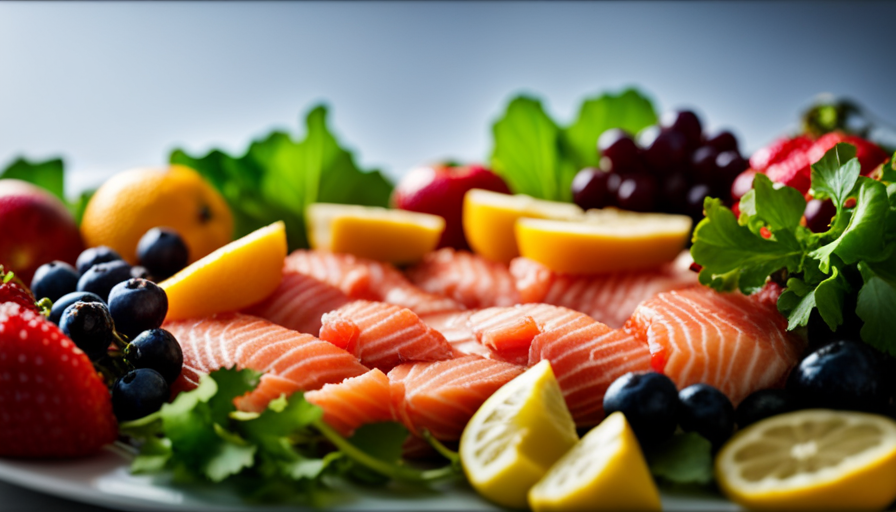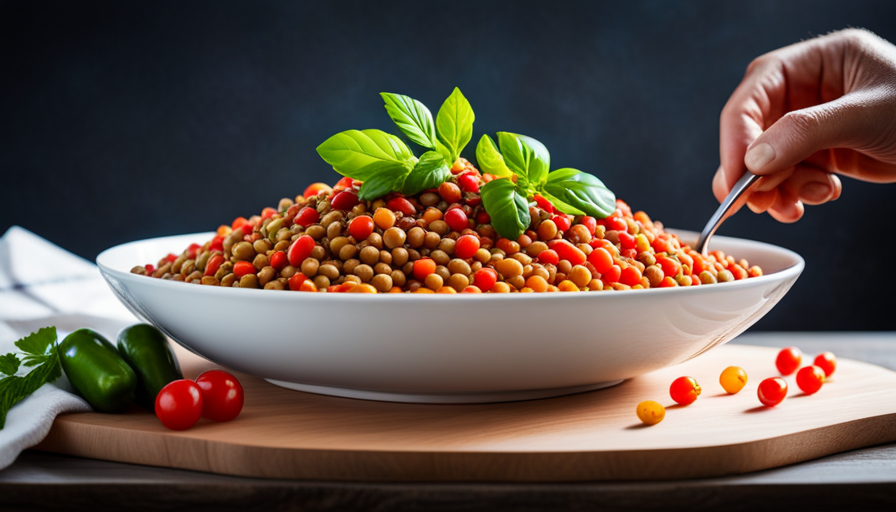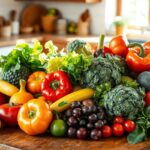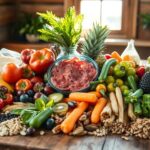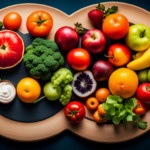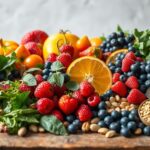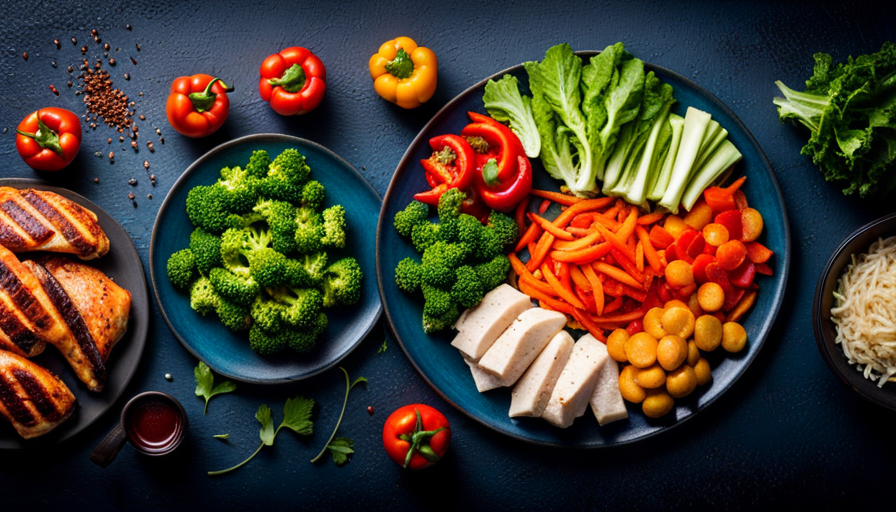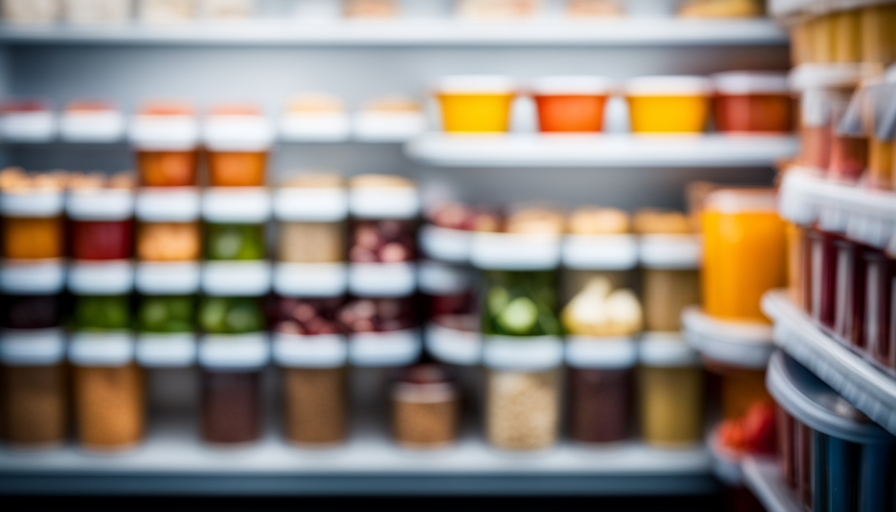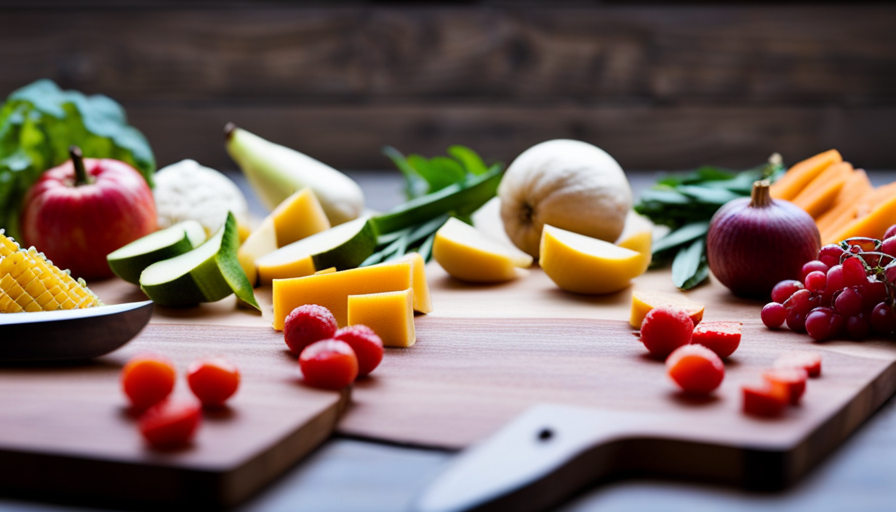You might have doubts about the concept of adopting an omnivorous raw food diet. Are raw foods only limited to fruits and vegetables?
Contrary to popular belief, a raw food diet can encompass a wide range of plant-based and animal-based foods, providing you with a balanced and nutritious way of eating. In this article, we will guide you on how to successfully incorporate both plant-based and animal-based foods into your raw food diet.
Understanding the basics of a raw food diet is crucial. You’ll learn how to balance plant-based and animal-based foods, incorporating raw fruits and vegetables into your meals. We’ll also explore the options of raw meat and seafood, ensuring you have a variety of choices.
Navigating the challenges of an omnivorous raw food diet can be daunting, but with our tips for meal planning and preparation, you’ll be well-equipped to handle them. Additionally, maintaining variety and enjoyment in your diet is essential, and we’ll show you how.
Finally, we emphasize the importance of listening to your body’s needs and seeking professional guidance and support to ensure optimal health and well-being on your raw food journey.
Key Takeaways
- Balancing protein sources from both plant-based and animal-based foods is important in an omnivorous raw food diet.
- Handling raw foods safely is crucial to prevent foodborne illnesses.
- Incorporating a variety of fruits, vegetables, and whole grains is essential for a balanced and nutritious raw food diet.
- Seeking professional guidance from a nutritionist or dietitian is necessary to ensure meeting nutritional needs and prevent deficiencies.
Understanding the Basics of a Raw Food Diet
Get ready to dive into the world of raw food and discover the incredible benefits it can bring to your health and well-being! When it comes to an omnivorous raw food diet, understanding the basics is crucial.
One of the most important aspects is balancing protein sources. While it may seem challenging to get enough protein on a raw food diet, there are plenty of options available. Incorporating a variety of plant-based protein sources such as nuts, seeds, legumes, and leafy greens can help ensure you meet your daily protein needs.
However, it’s also essential to understand food safety when following a raw food diet. Raw foods can carry harmful bacteria and parasites, so it’s crucial to handle and prepare them properly. Always wash your fruits and vegetables thoroughly before consuming them. Additionally, it’s advisable to soak nuts and seeds to remove any potential contaminants. It’s also crucial to store raw foods at the correct temperatures to prevent spoilage and reduce the risk of foodborne illnesses.
By balancing protein sources and understanding food safety, you can enjoy the incredible benefits of an omnivorous raw food diet. Improved digestion, increased energy levels, and weight loss are just a few of the potential benefits that await you on this journey.
So, get ready to explore the world of raw food and embark on a path to a healthier, more vibrant you!
Balancing Plant-based and Animal-based Foods
Achieving a harmonious blend of both plant-based and animal-based options creates a culinary symphony that tantalizes the taste buds and nourishes the body. Balancing protein sources is essential to ensure you meet your nutritional needs on an omnivorous raw food diet.
Plants like legumes, nuts, and seeds provide an excellent source of plant-based protein, while animal-based foods like eggs, dairy, and seafood offer high-quality animal protein.
Managing cravings is another important aspect of maintaining a balanced raw food diet. When cravings strike, it’s crucial to listen to your body and understand what it needs. Cravings can be a sign of nutrient deficiencies or emotional triggers.
Incorporating a variety of fruits, vegetables, and whole grains into your diet can help satisfy cravings for carbohydrates. For those craving protein, opting for lean animal-based options or plant-based proteins such as tofu or tempeh can be satisfying.
To evoke an emotional response in our audience, consider the following bullet list:
- Indulge in the vibrant colors and flavors of a rainbow salad, bursting with fresh produce.
- Experience the joy of biting into a perfectly ripe avocado, with its creamy texture and rich taste.
- Delight in the tender juiciness of a grilled chicken breast, seasoned with aromatic herbs and spices.
By balancing plant-based and animal-based foods, you can create a raw food diet that is not only nutritionally balanced but also enjoyable and satisfying to your taste buds.
Incorporating Raw Fruits and Vegetables
By incorporating a wide variety of fresh fruits and vegetables into your daily meals, you can enhance the nutritional value and sensory experience of your culinary journey.
Raw food smoothies and salads are excellent ways to incorporate raw fruits and vegetables into your omnivorous raw food diet.
Raw food smoothies are a delicious and convenient way to consume a large quantity of raw fruits and vegetables in one sitting. You can experiment with different combinations of fruits and vegetables to create a refreshing and nutrient-packed drink. For example, blend together bananas, spinach, kale, and almond milk for a green smoothie that’s rich in vitamins and minerals.
Raw food salads are another fantastic option for incorporating raw fruits and vegetables into your diet. You can mix together a variety of colorful vegetables, such as carrots, bell peppers, cucumbers, and tomatoes, to create a visually appealing and flavorful salad. Add some nuts, seeds, or a homemade dressing for extra texture and taste.
Including raw fruits and vegetables in your omnivorous raw food diet is essential for obtaining a wide array of nutrients, including vitamins, minerals, and antioxidants. These fresh and unprocessed foods also provide fiber, which aids in digestion and promotes overall gut health.
So, grab your blender and salad bowl and get creative with incorporating raw fruits and vegetables into your meals. Your body will thank you!
Exploring Raw Meat and Seafood Options
Indulging in the savory delights of uncooked meat and fresh seafood can add a tantalizing and adventurous twist to your culinary exploration. However, it is crucial to prioritize raw meat safety and ethical considerations when incorporating these options into your omnivorous raw food diet.
When it comes to raw meat, it is essential to choose high-quality, organic, and grass-fed options. These meats should come from reputable sources and be handled with care to minimize the risk of foodborne illnesses. It’s important to note that consuming raw meat carries a higher risk of bacterial contamination compared to cooked meat. Therefore, it is recommended to freeze the meat at subzero temperatures for a specific duration to kill any potential parasites or bacteria.
Here is a table to guide you in selecting the right types of raw meat and seafood for your diet:
| Raw Meat Options | Seafood Options | Ethical Considerations |
|---|---|---|
| Grass-fed beef | Fresh wild-caught fish | Sustainable sourcing |
| Free-range chicken | Raw oysters | Responsible fishing |
| Organic lamb | Sashimi-grade tuna | Marine conservation |
| Pasture-raised pork | Shrimp tartare | Antibiotic-free |
By choosing ethically sourced options, you can support sustainable practices and minimize the environmental impact of your food choices.
Remember, when handling raw meat and seafood, always follow proper hygiene practices and store them separately from other foods to avoid cross-contamination. Enjoy the flavors and textures, but never compromise on safety or ethics in your culinary explorations.
Navigating the Challenges of an Omnivorous Raw Food Diet
Explore the diverse array of culinary options and discover the unique challenges that come with embracing an omnivorous raw food lifestyle.
When it comes to an omnivorous raw food diet, there are certain challenges that you may encounter. One of the main challenges faced is finding a balance between consuming raw animal products and plant-based foods. While raw meat and seafood offer important nutrients like protein and omega-3 fatty acids, it can be difficult to ensure that you’re meeting all of your nutritional needs without the variety that cooked foods provide.
Another challenge is navigating dietary restrictions. Many people who follow an omnivorous raw food diet have specific dietary restrictions, such as avoiding certain types of meat or seafood. This can make it challenging to find suitable raw alternatives or replacements. It’s important to do thorough research and consult with a healthcare professional to ensure that you’re getting all the necessary nutrients while avoiding potential health risks.
Embracing an omnivorous raw food lifestyle comes with its own set of challenges. From finding the right balance between animal products and plant-based foods to navigating dietary restrictions, it requires careful planning and knowledge. By being aware of these challenges and seeking guidance when needed, you can successfully navigate the path of an omnivorous raw food diet.
Ensuring Adequate Nutrient Intake
Navigating the challenges of an omnivorous raw food lifestyle, how can you ensure you’re obtaining all the necessary nutrients for optimal health?
One of the key concerns when following a raw food diet is ensuring adequate protein intake. While raw animal products can be a source of protein, it’s important to choose high-quality, safely sourced options such as raw eggs, sashimi-grade fish, or grass-fed beef. Additionally, incorporating plant-based sources of protein like nuts, seeds, and legumes can help meet your protein needs.
Another potential challenge of an omnivorous raw food diet is the risk of vitamin deficiencies. Raw food diets can be low in certain vitamins, such as vitamin B12, which is primarily found in animal products. To ensure adequate vitamin intake, it may be necessary to supplement with vitamin B12 or consume fortified foods.
Including a variety of raw fruits and vegetables in your diet can help provide other essential vitamins and minerals.
It’s important to note that while a raw food diet can have potential health benefits, it’s essential to consult with a healthcare professional or registered dietitian to ensure you’re meeting your nutritional needs. They can help create a personalized plan that addresses any potential nutrient deficiencies and supports your overall health and well-being.
Tips for Meal Planning and Preparation
When planning and preparing your meals, it’s important to consider the variety of colorful fruits and vegetables that can be incorporated to ensure a well-balanced and nutrient-rich eating plan. Meal prepping can be a great way to save time and ensure you have healthy options readily available. Here are some tips for meal planning and preparation on an omnivorous raw food diet.
First, invest in some essential kitchen tools. A sharp chef’s knife, a high-powered blender, and a spiralizer can make meal prep easier and more enjoyable. These tools can help you chop, blend, and spiralize fruits and vegetables to create delicious and visually appealing dishes.
Next, create a meal plan for the week. This will help you stay organized and ensure you have all the necessary ingredients on hand. Consider incorporating a variety of fruits, vegetables, nuts, seeds, and grains into your meals to ensure you are getting a wide range of nutrients.
When meal prepping, try batch cooking. This involves making larger portions of certain dishes and storing them in the fridge or freezer for later use. This can be especially helpful on busy days when you don’t have time to cook from scratch.
Lastly, don’t be afraid to get creative with your meal prep. Experiment with different flavors, textures, and combinations of ingredients to keep your meals interesting and enjoyable.
| Kitchen Tools | Benefits | Tips |
|---|---|---|
| Sharp chef’s knife | Efficiently chop fruits and vegetables | Keep it sharp for easy slicing |
| High-powered blender | Blend smoothies and soups quickly and smoothly | Invest in a quality blender for better results |
| Spiralizer | Create fun and unique vegetable noodles | Experiment with different vegetables for variety |
By following these tips and incorporating a variety of colorful fruits and vegetables, you can ensure that your omnivorous raw food diet is not only nutritious but also delicious. Happy meal prepping!
Maintaining Variety and Enjoyment in Your Diet
To keep your taste buds excited and satisfied, it’s important to infuse your meals with a wide array of flavors and textures. Maintaining taste satisfaction on an omnivorous raw food diet can be achieved by exploring creative recipe options and incorporating a variety of ingredients.
Here are four tips to help you maintain variety and enjoyment in your diet:
-
Experiment with spices and herbs: Adding different spices and herbs to your dishes can completely transform the flavor profile. Try using cumin, turmeric, paprika, or fresh basil and cilantro to add depth and complexity to your meals.
-
Incorporate different fruits and vegetables: Don’t be afraid to try new fruits and vegetables. Each one offers unique flavors and textures. Consider adding exotic fruits like dragon fruit or papaya to your smoothies or incorporating vegetables like kohlrabi or jicama into your salads for a refreshing crunch.
-
Try different preparation techniques: Raw food doesn’t have to mean boring salads and plain fruits. Explore different preparation techniques like marinating, fermenting, or dehydrating to create interesting textures and flavors in your dishes.
-
Mix up your protein sources: Don’t limit yourself to just one type of protein. Experiment with different sources such as nuts, seeds, legumes, and even seaweed. This will not only provide you with a variety of flavors but also ensure that you’re getting a well-rounded nutrient profile.
By incorporating these tips into your meal planning and preparation, you can maintain taste satisfaction and continue to enjoy a diverse and exciting omnivorous raw food diet.
Listening to Your Body’s Needs
Discovering and acknowledging your body’s unique needs and cravings is key to maintaining a healthy and satisfying way of nourishing yourself. Listening to your body is essential in understanding what it needs to function optimally. When following an omnivorous raw food diet, it is important to pay attention to the signals your body sends you.
Understanding your body’s needs starts with the basics. Ensuring that you are consuming a variety of fruits, vegetables, nuts, seeds, and grains can provide the necessary nutrients for your body. However, it is important to note that everyone’s body is different, and what works for one person may not work for another. This is where listening to your body becomes crucial.
To help you better understand your body’s needs, you can use a simple table to track how certain foods make you feel. By noting any changes in energy levels, digestion, mood, or overall well-being, you can start to identify patterns and make adjustments to your diet accordingly. Here is an example of a table you can use:
| Food | Energy Level | Digestion | Mood | Overall Well-being |
|---|---|---|---|---|
| Apples | High | Easy | Happy | Excellent |
| Avocado | Moderate | Heavy | Calm | Good |
| Quinoa | Moderate | Easy | Energized | Excellent |
| Spinach | High | Easy | Content | Excellent |
| Walnuts | Moderate | Heavy | Focused | Good |
By paying attention to your body’s needs and understanding the effects of different foods, you can create a raw food diet that not only nourishes your body but also brings you joy and satisfaction. Listening to your body is a powerful tool in maintaining a healthy and balanced lifestyle.
Seeking Professional Guidance and Support
If you’re feeling overwhelmed or unsure about your dietary choices, it’s essential to seek professional guidance and support from a nutritionist or dietitian who can provide personalized advice.
Here are three reasons why seeking professional guidance and dietary support is crucial for successfully following an omnivorous raw food diet:
-
Personalized Advice: A nutritionist or dietitian can assess your individual needs, taking into account factors such as your age, gender, activity level, and health conditions. They can provide customized guidance on how to meet your nutritional requirements and optimize your diet for optimal health.
-
Prevent Nutritional Deficiencies: Following an omnivorous raw food diet can be challenging in terms of meeting all your nutritional needs. A professional can help you identify potential deficiencies and suggest appropriate food sources or supplements to ensure you’re getting all the essential vitamins, minerals, and macronutrients your body needs.
-
Support and Accountability: Changing your dietary habits can be difficult, and having someone to support and guide you along the way can greatly increase your chances of success. A nutritionist or dietitian can provide ongoing support, answer questions, and help you navigate any challenges or obstacles that may arise on your journey.
Seeking professional guidance and dietary support is crucial when following an omnivorous raw food diet. A nutritionist or dietitian can provide personalized advice, help prevent nutritional deficiencies, and offer support and accountability to ensure you’re on the right track to meeting your nutritional goals.
Frequently Asked Questions
Can I still eat cooked food while following an omnivorous raw food diet?
Yes, you can still enjoy cooked food while following an omnivorous raw food diet. However, it’s important to remember that the main focus of this diet is consuming raw foods. Cooking techniques can be used sparingly to enhance flavors or for certain foods that are better digested when cooked. Nonetheless, the benefits of raw food, such as preserving nutrients and enzymes, are maximized when you prioritize raw options in your diet.
Are there any specific fruits and vegetables that are better to eat raw?
To maximize the nutritional benefits of consuming raw fruits and vegetables, focus on those that retain their nutrients when eaten raw. Opt for leafy greens like spinach and kale, which are rich in vitamins and minerals. Citrus fruits like oranges and grapefruits are packed with vitamin C. Berries, such as strawberries and blueberries, offer antioxidants.
Incorporate more raw foods into your diet by adding them to salads, smoothies, or enjoying them as snacks.
How do I ensure I am getting enough protein on a raw food diet?
To ensure you’re getting enough protein on a raw food diet, focus on incorporating protein-rich sources like nuts, seeds, and legumes. These nutrient powerhouses provide essential amino acids needed for muscle repair and growth.
Balancing your nutrients is key, so include a variety of fruits and vegetables to meet your vitamin and mineral needs. Experiment with sprouting and fermenting to enhance nutrient absorption.
Consulting a nutritionist can also help you tailor your raw food diet for optimal protein intake.
Can I eat dairy products on an omnivorous raw food diet?
Yes, you can include dairy products on a raw food diet, but it’s important to consider alternatives as well. Raw dairy products, such as raw milk or cheese made from raw milk, can provide essential nutrients. However, there are also plant-based alternatives to dairy, like nut milks or coconut yogurt, that are suitable for a raw food diet. These alternatives can offer similar tastes and textures while still providing important nutrients.
Are there any supplements I should consider taking while on a raw food diet?
Supplement recommendations are important to consider while on a raw food diet. Due to the limited variety of foods in this diet, there’s a possibility of potential deficiencies. To ensure you’re getting all the necessary nutrients, consider taking supplements such as vitamin B12, iron, calcium, and omega-3 fatty acids. These can help prevent deficiencies and support your overall health. Remember to consult with a healthcare professional before starting any new supplements.
Can an Omnivorous Raw Food Diet be Safe if Properly Prepared with a Kill Step?
When conducting kill step raw food preparation for an omnivorous diet, safety is crucial. Proper sanitation and cooking methods are key to reducing the risk of harmful bacteria. With careful handling and cooking, an omnivorous raw food diet can be safe and nutritious for those who choose to follow this lifestyle.
Conclusion
Congratulations on taking the first step towards a healthier lifestyle by embarking on an omnivorous raw food diet! By incorporating a balance of plant-based and animal-based foods, you’re providing your body with a wide range of nutrients and flavors.
From crisp and refreshing raw fruits and vegetables to succulent and nourishing raw meat and seafood options, your taste buds will be treated to a symphony of flavors.
Remember to listen to your body’s needs, seek professional guidance, and enjoy the journey of exploring this exciting and vibrant way of eating. Bon appétit!

